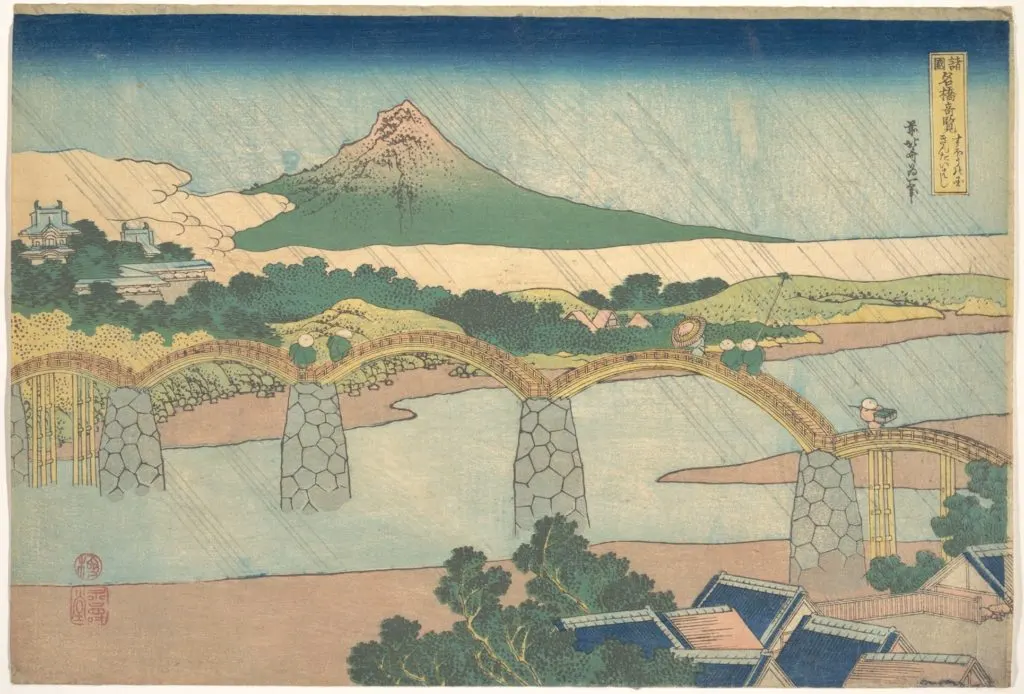Before the most fascinating bridges in the world were constructed with tons of concrete and steel, another, less durable material was used, namely wood.
Very few of the historical wooden bridges remain intact today, and one of those bridges in Japan is no exception.
The Kintai Bridge was destroyed multiple times by floods after it was completed in 1673 but has been rebuilt to its original design in the 20th century.
Let’s take a closer look at some interesting facts about this remarkable piece of bridge history!
1. It’s located in the southwest of Japan
The Kintai Bridge referred to as the “Kintai-kyō” locally, is a fascinating historical wooden bridge located in the city of Iwakuni. This city is located in the Yamaguchi Prefecture in the southwest of Japan.
It’s a relatively small town (by Japanese standards) with just over 130,000 inhabitants, but with a rich history of which the famous wooden bridge is an important part.
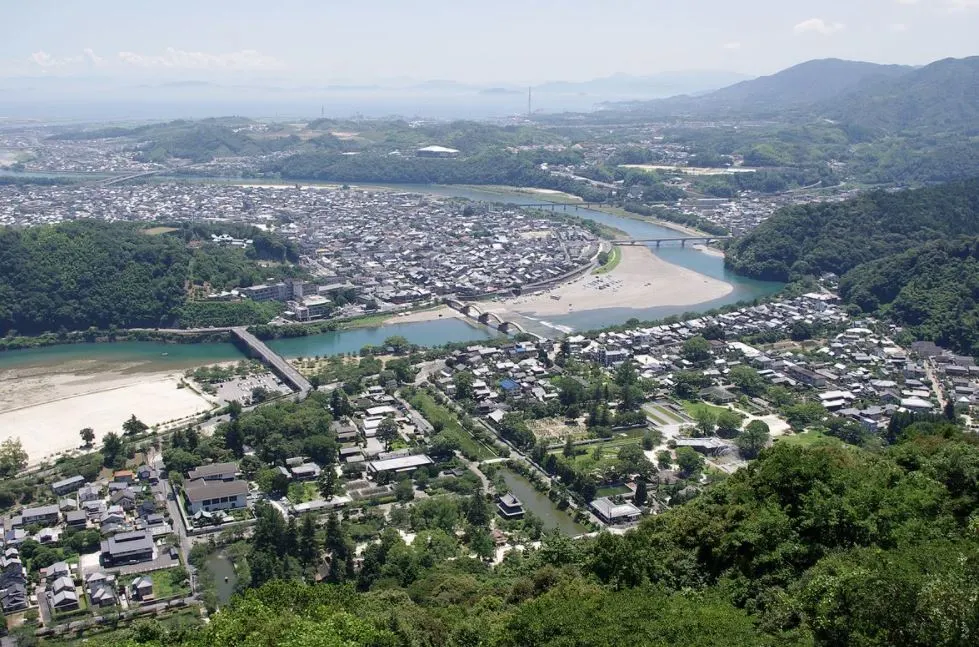
2. The bridge is part of a park with various attractions
The bridge is one of the multiple attractions in the area referred to as “Kikko Park,” a park that used to be the location of the residence of the lords of Iwakuni. This has been turned into a park with walking paths and landscaped areas.
Apart from the bridge, which leads up to the park, the main attraction is Iwakuni Castle, which is located on top of Mount Yokoyama. This castle was chosen as one of the 100 Great Castles of Japan.

3. It used to be a bridge leading up to the gate of a castle
The original castle was built by the founder of the Iwakuni Domain, a man named Kikkawa Hiroie, between 1601 and 1608. This original castle was destroyed in 1615 so it was rebuilt on top of the mountain.

The original bridge on the location was part of a series of wooden bridges constructed spanning the Nishiki River, leading up to the gate of the original castle. Most of these bridges were destroyed by floods, including the original Kintai Bridge.
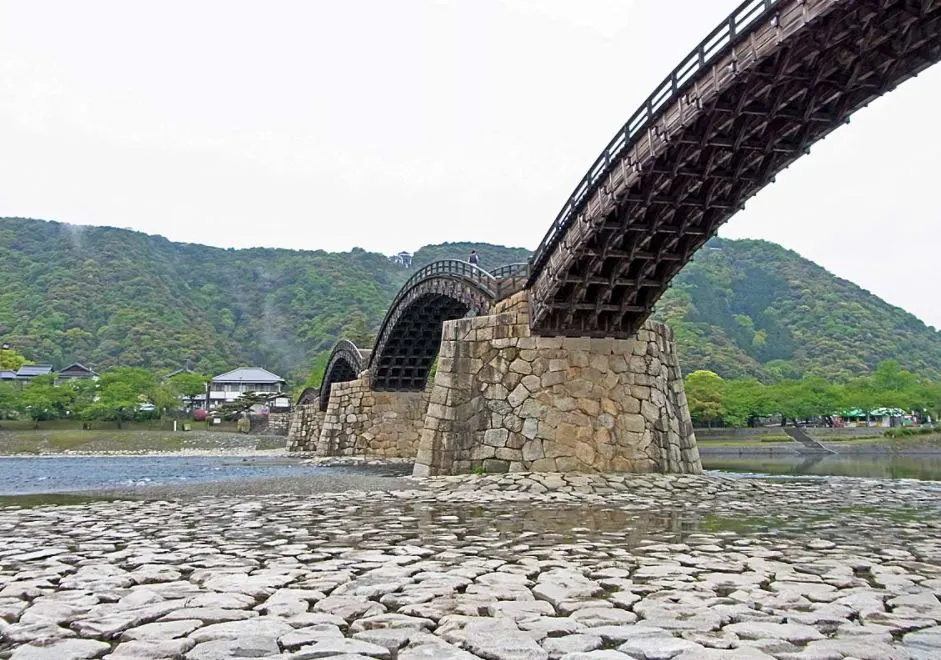
4. A statue of the man who commissioned the bridge is located nearby
The Kintai Bridge as we know it today was completed in the year 1673 by the third lord of the Iwakuni Domain, a man named Kikkawa Hiroyoshi.
As you enter the park after crossing the bridge, you are greeted by his statue!
The park also features various other attractions, including several museums such as the Kikkawa Museum, which displays artifacts related to the Iwakuni family, and the Iwakuni Art Museum, which displays various pieces of art collected by the Lords of Iwakuni.
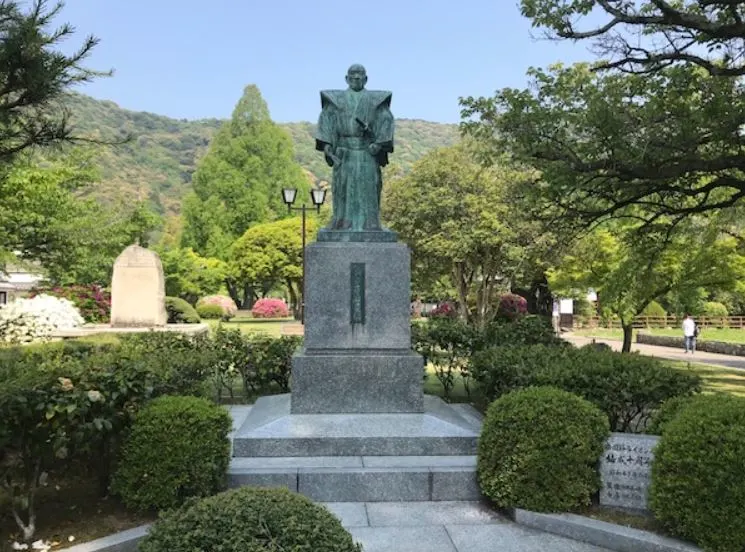
5. People in the region had to pay tax to maintain the bridge
One of the most remarkable Kintai Bridge facts is that the current version is far from being the original. Just one year after the bridge was completed in 1673, it was washed away by a flood, even after the original wooden piers were replaced by stone versions.
The rebuilt version was much stronger but still required a lot of maintenance. To pay for this, the Lords of Iwakuni charged a special tax, especially for this purpose.
The result was that the 3 middle spans of the bridge were rebuilt every 20 years, and the 2 outer spans were rebuilt every 40 years. This ensured the wooden bridge remained in place for nearly 3 centuries!

6. The original bridge was indirectly destroyed because of World War II
Even though we refer to it as the “original bridge,” most of the structure was replaced every couple of decades so that was not exactly the case. It was, however, the same structure that was rebuilt every time as the one completed at the end of the 17th century.
With this in mind, the bridge spanning the Nishiki River was finally destroyed in the year 1950, shortly after World War II, during a severe typhoon called “Kijia.”
The entire bridge was washed away because of the flood, and the Second World War was mostly to blame. During the war, the bridge hadn’t been maintained anymore. This left the bridge vulnerable, especially during a major calamity.
The bridge we see today was completed in the year 1953 and is a replica of the original structure.

7. The bridge stood for nearly 3 centuries without the use of nails
Building and rebuilding the bridge was a work of extreme precision, mainly because it was completely made of wood without the use of nails!
The girders were bound and clamped together with metal belts, and the other pieces of the bridge were fitted together in such a way that it was able to support itself.
During the 1953 reconstruction, metal nails were used instead of the original method of fitting the wooden pieces together.
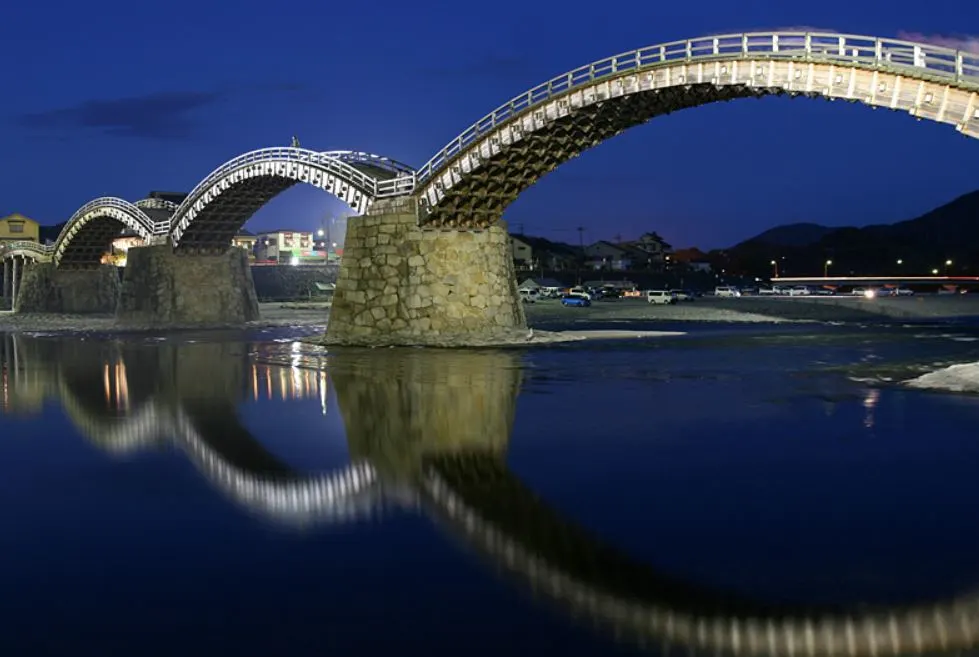
8. The deck of the bridge was pretty much disposable for a particular reason
Regardless of the method of construction, little can be done to protect the structure from extreme forces of nature such as major floods during typhoons. That’s why the bridge was constructed in such a way that the core structure was protected at all times.
Instead of firmly attaching the wooden deck of the bridge onto it, it was simply put on top of the core frame using mortise and tenon joints. This allowed the wooden deck to be simply washed away during floods while the main structure, which includes the piers, was spared.

9. It’s a popular tourist attraction during a particular time of the year
The Kintai Bridge, along with the Kikko Park and Iwakuni Castle, are major tourist attractions in the region, and especially during some particular times in the year.
Most visitors enjoy the park during the Cherry blossom festival, a period in the spring when the flowers of these trees blossom. The other time of the year is during the autumn months when the leaves of the Japanese maples in the region change colors.

10. It was declared as one of Japan’s national treasures in the 1920s
The bridge consists of 5 wooden arches and is supported by 4 stone piers and 2 wooden piers on the dry edge of the riverbed. The 3 middle spans are 35.1 meters (115.15 feet) long while the two outer spans are 34.8 meters (114.17 feet) long.
This results in a total length of 175 meters (574.14 feet) with a total width of 5 meters (16.4 feet).
The bridge is one of the most iconic structures in the region and has been designated as a national treasure of Japan since the year 1922!
